Call +(254) 703 030 000 / 751 483 999 / 721 704 777
- Home
- Plumbing
- Plumbing Valves
- Backflow Prevention Valves
- Backflow Preventers
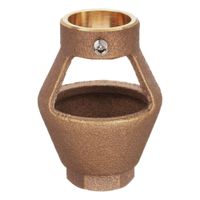
Accessories for Backflow Preventers
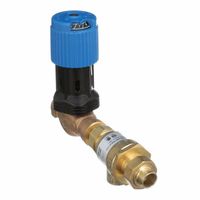
Combination Fill Valve Backflow Preventers
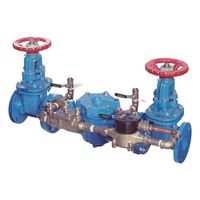
Double Check Backflow Preventer Detectors
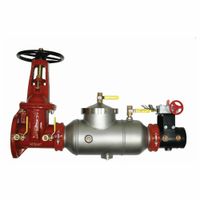
Double Check Backflow Preventers
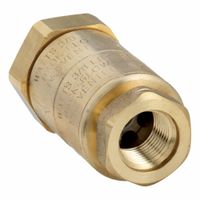
Dual Check Backflow Preventers
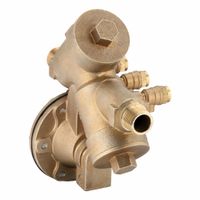
Reduced-Pressure Zone Backflow Detectors
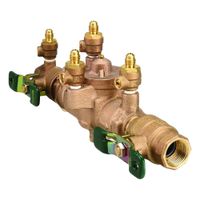
Reduced-Pressure Zone Backflow Preventers
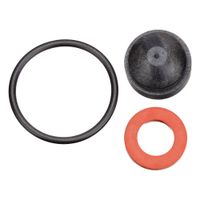
Repair Kits & Parts for Backflow Preventers
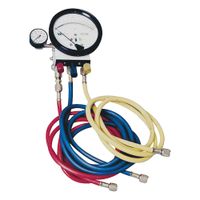
Test Kits for Backflow Preventers
Frequently Asked Questions
What is a backflow preventer and how does it work?
A backflow preventer is a device installed in plumbing systems to prevent the reverse flow of water, which can lead to contamination of clean water supplies. It ensures that water flows in one direction only, maintaining the separation between potable (drinkable) water and non-potable water sources.
Backflow can occur due to two main conditions: backpressure and backsiphonage. Backpressure happens when the downstream pressure exceeds the supply pressure, potentially forcing contaminated water back into the clean water supply. Backsiphonage occurs when there is a drop in supply pressure, such as during a water main break or heavy water usage, creating a vacuum that pulls non-potable water into the potable system.
Backflow preventers work by using a combination of check valves, air gaps, and pressure relief valves. The most common types include:
1. **Double Check Valve Assembly (DCVA):** Consists of two check valves in series, providing redundancy. If one valve fails, the other prevents backflow.
2. **Reduced Pressure Zone (RPZ) Assembly:** Features two check valves with a pressure relief valve between them. If either check valve fails, the relief valve opens to discharge water, preventing backflow.
3. **Pressure Vacuum Breaker (PVB):** Contains an air inlet valve and a check valve. The air inlet opens to break the vacuum if backsiphonage occurs, stopping reverse flow.
4. **Atmospheric Vacuum Breaker (AVB):** Uses an air inlet valve that opens when water flow stops, preventing siphonage by introducing air into the system.
These devices are crucial in protecting public health by ensuring that contaminants do not enter the potable water supply, especially in systems where cross-connections between clean and contaminated water sources are possible. Regular maintenance and testing are essential to ensure their proper functioning.
Why is backflow prevention important?
Backflow prevention is crucial for maintaining the safety and quality of potable water systems. Backflow occurs when the normal flow of water is reversed, potentially allowing contaminants to enter the clean water supply. This can happen due to backpressure or backsiphonage, often caused by changes in water pressure within the system.
The primary importance of backflow prevention lies in protecting public health. Contaminants such as chemicals, bacteria, and other hazardous substances can enter the water supply if backflow occurs, leading to waterborne diseases and health risks. For instance, if a garden hose is submerged in a pool or connected to a chemical sprayer, a sudden drop in water pressure could siphon pool water or chemicals back into the drinking water system.
Backflow prevention devices, such as check valves, air gaps, and reduced pressure zone assemblies, are installed to ensure that water flows in the correct direction and to prevent contamination. These devices are essential in various settings, including residential, commercial, and industrial environments, where cross-connections between potable and non-potable water sources are common.
Moreover, regulatory compliance is another critical aspect. Many local and national regulations mandate the installation of backflow prevention devices to ensure water safety. Non-compliance can result in legal penalties and increased liability for property owners and businesses.
In summary, backflow prevention is vital for safeguarding public health, ensuring water quality, and complying with legal standards. It prevents the contamination of drinking water systems, thereby protecting communities from potential health hazards and ensuring the reliability of water supply infrastructure.
What are the different types of backflow preventers?
1. **Air Gap**: A physical separation between the end of a water supply outlet and the flood level of a fixture. It is the simplest and most effective backflow prevention method.
2. **Atmospheric Vacuum Breaker (AVB)**: A device that prevents back-siphonage by allowing air into the system when a negative pressure is detected. It must be installed downstream of the last control valve and cannot be under continuous pressure.
3. **Pressure Vacuum Breaker (PVB)**: Similar to an AVB but can be used under continuous pressure. It includes a check valve and an air inlet valve that opens to break the vacuum if back-siphonage occurs.
4. **Double Check Valve Assembly (DCVA)**: Consists of two independent check valves in series, with shut-off valves and test cocks. It is suitable for low to medium hazard situations and prevents both back-siphonage and backpressure.
5. **Reduced Pressure Zone Device (RPZ)**: Offers the highest level of protection by using two check valves and a pressure differential relief valve. It is used for high hazard situations and protects against both back-siphonage and backpressure.
6. **Hose Bibb Vacuum Breaker**: A small, screw-on device for hose bibbs that prevents backflow from garden hoses. It is designed to prevent back-siphonage.
7. **Spill-Resistant Pressure Vacuum Breaker (SVB)**: An advanced version of the PVB, designed to minimize water spillage during operation. It is suitable for continuous pressure applications.
8. **Dual Check Valve**: A compact device with two check valves, used in residential applications for low hazard situations. It is not testable and provides basic backflow prevention.
9. **Check Valve**: A simple device that allows water to flow in one direction only, preventing backflow. It is often used in conjunction with other backflow prevention devices.
How do you test a backflow preventer?
To test a backflow preventer, follow these steps:
1. **Preparation**: Ensure you have the necessary tools, including a backflow test kit, and verify that the water supply is turned on. Identify the type of backflow preventer (e.g., RPZ, DCVA) and locate the test cocks.
2. **Initial Setup**: Connect the test kit hoses to the test cocks. Bleed air from the hoses by opening the high side bleed valve until water flows steadily, then close it.
3. **Check Valve 1**: Close the downstream shut-off valve. Open test cock 2 and attach the high side hose. Open test cock 1 and attach the low side hose. Close the upstream shut-off valve. Observe the gauge for pressure drop; it should hold steady above the minimum threshold (e.g., 5 psi for RPZ).
4. **Check Valve 2**: Open test cock 3 and attach the high side hose. Open test cock 4 and attach the low side hose. Observe the gauge for pressure drop; it should hold steady above the minimum threshold.
5. **Relief Valve (RPZ only)**: Open test cock 2 and attach the high side hose. Open test cock 3 and attach the low side hose. Close the upstream shut-off valve. Observe the gauge; the relief valve should open before the pressure drops below the minimum threshold.
6. **Record Results**: Document the test results, including any failures or issues, and ensure compliance with local regulations.
7. **Restore System**: Remove the test kit, open all shut-off valves, and ensure the system is functioning correctly.
8. **Report**: Provide a detailed report of the test results to the appropriate authority or client.
Regular testing ensures the backflow preventer is functioning correctly, preventing contamination of the potable water supply.
How often should backflow preventers be inspected or tested?
Backflow preventers should be inspected and tested at least annually. This is a general guideline, but the frequency can vary based on local regulations, the type of backflow preventer, and the specific application or risk level associated with the water system. Some high-risk systems may require more frequent testing, such as semi-annually or quarterly. It's important to consult local codes and regulations, as they may have specific requirements for testing intervals. Additionally, any time a backflow preventer is repaired, replaced, or relocated, it should be tested to ensure proper operation.
What are the signs of a failing backflow preventer?
Signs of a failing backflow preventer include:
1. **Water Leaks**: Visible water leaks around the preventer or from the relief valve indicate potential failure.
2. **Low Water Pressure**: A noticeable drop in water pressure can suggest that the preventer is not functioning properly.
3. **Water Discoloration**: Discolored or dirty water may indicate that contaminated water is flowing back into the clean water supply.
4. **Strange Noises**: Unusual noises such as banging, gurgling, or vibrating sounds can be a sign of malfunction.
5. **Frequent Valve Tripping**: If the relief valve frequently opens, it may indicate excessive pressure or a malfunction.
6. **Slow Drainage**: Slow drainage in sinks, toilets, or other fixtures can be a symptom of backflow issues.
7. **Foul Odors**: Unpleasant smells from the water supply can suggest contamination due to backflow.
8. **Visible Damage**: Cracks, corrosion, or other physical damage to the preventer can impair its function.
9. **Water Hammer**: Sudden pressure changes causing loud banging noises in pipes can indicate backflow issues.
10. **Inconsistent Water Flow**: Fluctuating water flow or pressure can be a sign of a failing preventer.
11. **Contaminant Detection**: Testing that reveals contaminants in the water supply can indicate backflow.
12. **Unusual Water Taste**: A change in water taste can suggest contamination from backflow.
13. **Frequent Repairs**: Repeated need for repairs or maintenance can indicate a failing system.
14. **System Alarms**: For systems with monitoring, alarms or alerts can indicate a problem.
15. **Increased Water Bills**: Unexplained increases in water bills may suggest leaks or inefficiencies related to backflow issues.
How much does it cost to install or replace a backflow preventer?
The cost to install or replace a backflow preventer typically ranges from $135 to $1,000. The price can vary significantly based on several factors, including the type of backflow preventer, the complexity of the installation, and local labor rates.
1. **Type of Backflow Preventer**: There are different types of backflow preventers, such as pressure vacuum breakers, double-check valves, and reduced pressure zone devices. Simple devices like pressure vacuum breakers are generally less expensive, while more complex systems like reduced pressure zone devices can be on the higher end of the cost spectrum.
2. **Installation Complexity**: The complexity of the installation can affect the cost. If the installation requires significant plumbing work, such as cutting into existing pipes or installing additional components, the labor costs will increase. Additionally, if the installation site is difficult to access, this can also raise the price.
3. **Labor Costs**: Labor costs can vary depending on the region and the plumber's experience. On average, plumbers charge between $50 and $150 per hour. The total labor cost will depend on the time required for the installation or replacement.
4. **Permits and Inspections**: Some areas may require permits and inspections for backflow preventer installations, which can add to the overall cost. Permit fees can range from $50 to $200, depending on local regulations.
5. **Maintenance and Testing**: After installation, regular maintenance and testing are often required to ensure the backflow preventer is functioning correctly. These additional services can incur extra costs over time.
Overall, while the initial installation or replacement cost can vary, it is essential to consider these factors to get an accurate estimate for your specific situation.